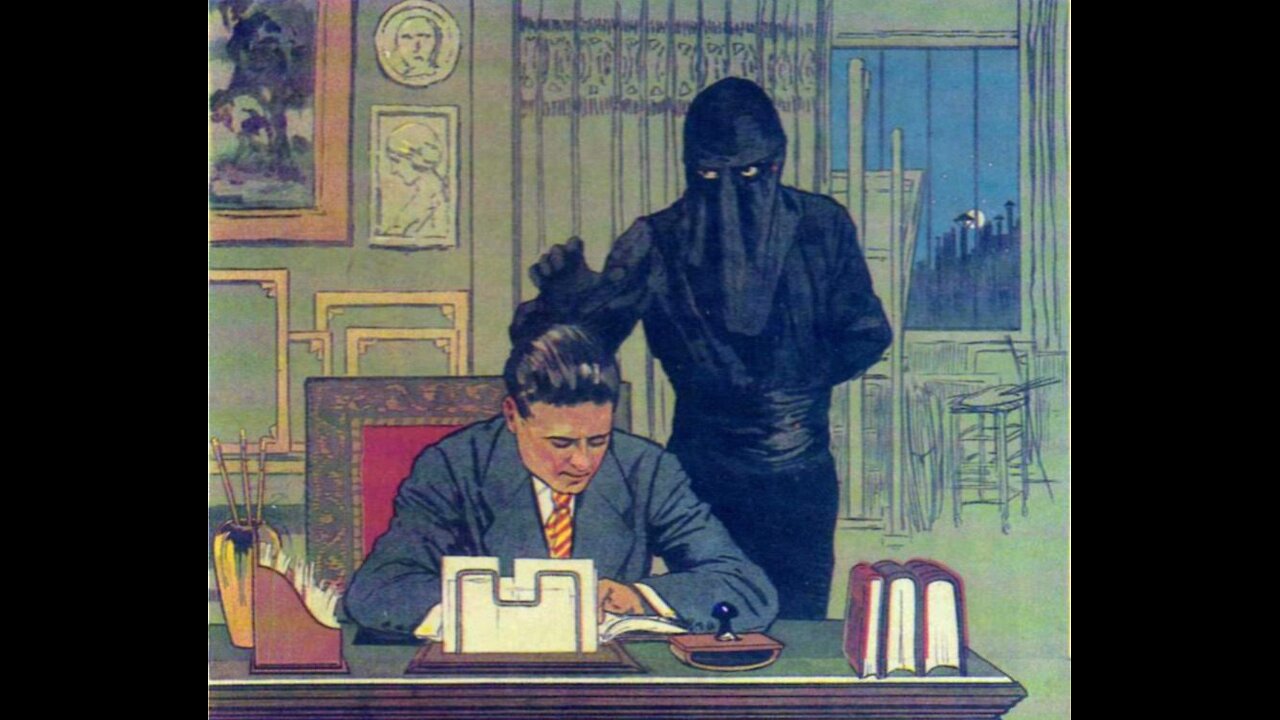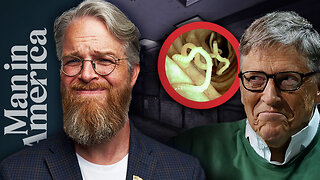Premium Only Content

FANTÔMAS (1913-1914) Five Chapters. Tinted.
FANTÔMAS is a French silent crime film serial directed by Louis Feuillade, based on the book series of the same name, created by French writers Marcel Allain (1885–1969) and Pierre Souvestre (1874–1914). Fantomas is one of the most popular characters in the history of French crime fiction, He was created in 1911 and appeared in a total of 32 volumes written by the two collaborators, then a subsequent 11 volumes written by Allain alone after Souvestre's death in 1914. Fantômas represents a transition from Gothic novel villains of the 19th century to modern-day supervillains.
The five episodes of the serial, initially released throughout 1913–14, were restored under the direction of Jacques Champreaux and released in this new form in 2006.
Series
"In the Shadow of the Guillotine"
"Juve vs. Fantômas"
"The Dead Man Who Killed"
"Fantômas vs. Fantômas"
"The False Magistrate"
The series consists of five episodes, each an hour to an hour and a half in length, which end in cliffhangers. Episodes one and three end with Fantômas making a last-minute escape, and the end of the second entry has Fantômas blowing up Lady Beltham's manor house with Juve and Fandor, the two heroes, still inside. The subsequent episodes begin with a recap of the story that has gone before. Each film is further divided into three or more chapters that do not end in cliffhangers.
Fantômas I: À l'ombre de la guillotine ("Fantômas: In the Shadow of the Guillotine") (1913)
"Le Vol du Royal Palace Hotel" ("The Theft at the Royal Palace Hotel")
"La Disparition de Lord Beltham" ("The Disappearance of Lord Beltham")
"Autour de l'échafaud" ("By the Guillotine")
Fantômas II: Juve contre Fantômas ("Juve vs. Fantômas") (1913)
"La Catastrophe du Simplon-Express" ("Disaster on the Simplon Express")
"Au "Crocodile" ("At the Crocodile")
"La Villa hantée" ("The Haunted Villa")
"L'Homme noir" ("The Man in Black")
Fantômas III: Le Mort Qui Tue ("Fantômas: The Dead Man Who Killed") (1913)
"Le Drame de la rue Norvins" ("The Tragedy in Rue Norvins")
"L'Enquête de Fandor" ("Fandor's Investigation")
"Le Collier de la princesse" ("The Princess's Necklace")
"Le Banquier Nanteuil" ("The Banker Nanteuil")
"Elizabeth Dollon"
"Les Gants de peau humaine" ("The Human Skin Gloves")
Fantômas IV: Fantômas contre Fantômas ("Fantômas vs. Fantômas") (1914)
"Fantômas et l'opinion publique" ("Fantômas and Public Opinion")
"Le Mur qui saigne" ("The Wall that Bleeds")
"Fantômas contre Fantômas" ("Fantômas vs. Fantômas")
"Règlement de comptes" ("Getting Even")
Fantômas V: Le Faux Magistrat ("The False Magistrate") (1914)
"Prologue" ("The Theft at the Château des Loges")
"Le Prisonnier de Louvain" ("The Prisoner of Louvain")
"Monsieur Charles Pradier, juge d'instruction" ("Charles Pradier, Examining Magistrate")
"Le Magistrat cambrioleur" ("The Burglar Judge")
"L'Extradé de Louvain" ("The Extradited Man")
Cast
René Navarre as Fantômas aka Gurn, Tom Bob and many other aliases
Edmund Breon as Inspector Juve
Georges Melchior as Jérôme Fandor, reporter for the Capital newspaper and Juve's collaborator
Renée Carl as Lady Beltham, Fantômas' mistress
Jane Faber as Princesse Danidoff
Volbert as Valgrand
Naudier as Nibet
Maillard as Valgrand's dresser
Yvette Andréyor as Josephine
RECEPTION:
Fantômas was enormously popular upon its release in France, and made Navarre, who played Fantômas, an overnight celebrity. In a rave review from a 1914 issue of the French journal Chronique cinématographique, critic Maurice Raynal wrote that "there is nothing in this involved, compact, and concentrated film but explosive genius".
In his contemporary critical review of the Fantômas serial, Peter Schofer observed that contrary to some modern understandings of the series, Fantômas was not interpreted by its audience as a suspense film. Based on a previously published and widely read newspaper serial, audiences of the time were already extensively familiar with the plot, characters, and outcome of the story, making the film much more about how the story might develop as opposed to what might happen next.
-
 LIVE
LIVE
Wendy Bell Radio
4 hours agoPet Talk With The Pet Doc
3,726 watching -
![Mr & Mrs X - [DS] Trafficking Empire – The Pedo Network Island, The Cover-Up: Part 2 - Ep 6](https://1a-1791.com/video/fww1/f8/s8/1/y/p/x/f/ypxfz.0kob-small-Mr-and-Mrs-X-DS-Trafficking.jpg) LIVE
LIVE
X22 Report
15 hours agoMr & Mrs X - [DS] Trafficking Empire – The Pedo Network Island, The Cover-Up: Part 2 - Ep 6
411 watching -
 27:15
27:15
Liberty Hangout
2 days agoThe Most DELUSIONAL Democrats on Earth!
5.56K83 -
 13:13
13:13
Mrgunsngear
15 hours ago $1.95 earnedStreamlight TLR-1 HP Review: Can It Dethrone Surefire?
13.7K8 -
 38:41
38:41
JohnXSantos
22 hours agoHow To Start A CLOTHING BRAND on a BUDGET! Step X Step (2025)
41 -
 1:26:34
1:26:34
Man in America
18 hours agoExposing the Cover-Up That Could Collapse Big Medicine: Parasites
64.8K57 -
 30:57
30:57
Her Patriot Voice
15 hours ago $13.09 earnedDemocrats More Unhinged Than EVER Before!
86K121 -
 29:13
29:13
Clownfish TV
23 hours agoGen Z are Becoming the Boomers?! | Clownfish TV
9.25K34 -
 1:48:31
1:48:31
Squaring The Circle, A Randall Carlson Podcast
18 hours agoMEGA Tsunamis and the formation of our World ft. Dr. Dallas Abbot
22.8K5 -
 29:26
29:26
Advanced Level Diagnostics
2 days ago2019 Chevy Express - No Crank, Relay Clicking! Diag & Fix!
3